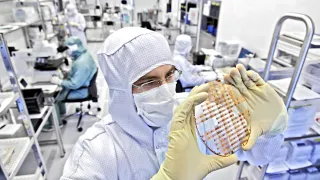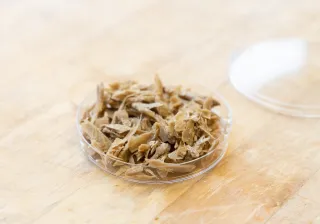Microelectromechanical sensors are essential components in all walks of life. However, bringing biospecific elements into miniaturized sensors has been a challenge, obstructing the development of bioanalytical applications. A new European project aims to change this by developing key enabling technologies for producing silicon-based multiplexed biosensors rapidly and cost-effectively. This could transform semiconductor-based biosensor industries in Europe.
Microelectromechanical sensors (MEMS) are used in endless applications in different fields such as transportation, telecommunication and consumer electronics. Biosensing has high potential for these solutions, but so far it has been difficult to assemble biomolecules into semiconductor-based sensor chips. Another constraint is the high cost of production. As the production sites are specialized in semiconductors and not open for biochemical experimentation, there have been few opportunities for the development of new integrated MEMS biosensors.
BIOASSEMBLER, a new European project, proposes to change this. It aims to produce a new generation of biosensors manufactured through bio-intelligent processes, marrying silicon with biomolecules and bringing MEMS sensors and biotechnology together in a novel bio-inspired self-assembly process. VTT Technical Research Centre of Finland coordinates the project and contributes to it by integrating bioassembly technologies with MEMS-based acoustic microresonators for the development of the next generation biosensors.
Bio-intelligent self-assembly – a key technology with a wide range of applications
Biomolecular self-assembly enables rapid, scalable biofunctionalization of MEMS sensor chips. This will allow for the first time the simultaneous deposition of tens of different biomolecules into thousands of exact, predetermined positions on a silicon wafer. The innovative wafer-level biofunctionalization, combined with a novel encapsulation process, will significantly lower the production costs of bioMEMS sensors. These industrial, repeatable, and low-cost processes are also suitable for mass manufacturing.
As a result, bioMEMS can become more widely used for different sensing applications. For example, these small sensors could measure molecular markers of health and disease in small droplets of biological fluids such as blood or urine. Furthermore, measuring several analytes in parallel (i.e. multiplexing) would open up vast possibilities in different bioanalytical applications, such as professional healthcare (infectious disease biomarkers), food and agriculture (antibiotics, mold toxins), law enforcement (drug testing) or environmental monitoring (water quality).
Building sustainable semiconductor industry in Europe
MEMS sensors are produced by microelectromechanical systems technology on the surface of silicon wafers. The technology requires large investments in highly sophisticated clean room facilities. This has led to the concentration of the sensor manufacturing business to few big players, many operating in Asia. BIOASSEMBLER project aims to change this scenario by creating new bio-inspired assembly technology for scalable manufacturing of biosensors in semiconductor fabrication platforms. This will aid in a gaining technological leadership for the semiconductor industry in Europe.
“Climate change and the increased use of resources are demanding the emergence of innovative bio-intelligent solutions. We aim to support sustainability goals by minimizing the use of reagents. Innovative biofunctionalization of MEMS sensors means that a greater share of the biomolecules can be attached to the sensor surface in an active state. The technology also enables recyclability of the reagents; the biomolecules that do not attach to the surface may be reutilized in the next production batch. Also, multiplexed sensing - the simultaneous measurement of several analytes in parallel - increases sustainability, as the same silicon surface area will yield more test results than before. This reduces the consumption of silicon wafers and electronics components per each measured analyte”, refers Petri Saviranta, VTT researcher and project coordinator.
The project “BIOASSEMBLER - Integrating bio-inspired assembly into semiconductor manufacturing technology for biosensors” has received funding from the European Union under the Horizon Europe programme (Grant No. 101070589). With an overall budget of 3 265 740.25 euros, the project brings together a team from six European institutions: VTT Technical Research Centre of Finland Ltd and Biomensio Oy from Finland; University of Vienna from Austria; JOBST Technologies GMBH and Abcalis GMBH from Germany; and Centre for Social Studies of the University of Coimbra from Portugal.





